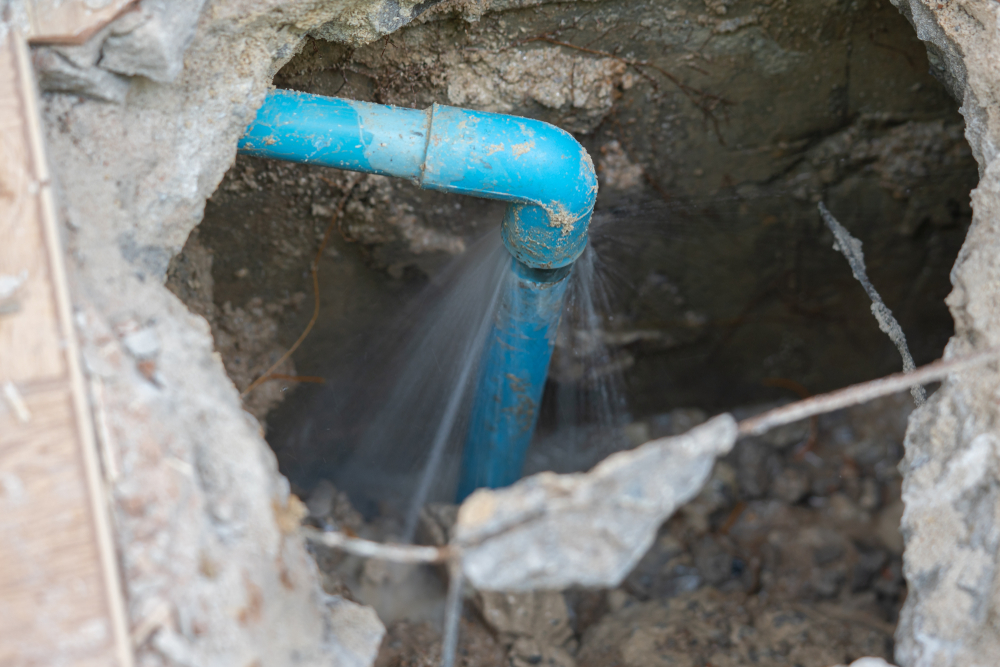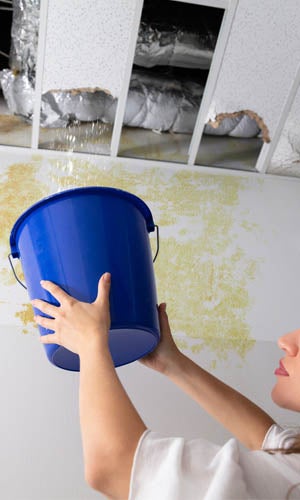Detecting Secret Water Line Leaks: Six Effective Detection Methods
Detecting Secret Water Line Leaks: Six Effective Detection Methods
Blog Article
What are your thoughts about Locating water leaks?

Early detection of leaking water lines can minimize a potential calamity. Some tiny water leaks might not be visible.
1. Analyze the Water Meter
Every residence has a water meter. Inspecting it is a proven way that helps you discover leakages. For starters, turn off all the water resources. Guarantee no one will purge, make use of the tap, shower, run the cleaning device or dishwashing machine. From there, most likely to the meter as well as watch if it will alter. Given that nobody is using it, there ought to be no activities. If it moves, that suggests a fast-moving leak. If you detect no modifications, wait an hour or two as well as examine back once again. This suggests you may have a sluggish leakage that might also be underground.
2. Examine Water Consumption
Examine your water bills and also track your water usage. As the one paying it, you ought to discover if there are any inconsistencies. If you find sudden changes, regardless of your intake being the same, it implies that you have leakages in your plumbing system. Bear in mind, your water expense must drop under the very same array each month. An abrupt spike in your costs indicates a fast-moving leak.
A consistent increase every month, also with the very same habits, shows you have a slow leak that's additionally slowly intensifying. Call a plumber to thoroughly inspect your home, particularly if you really feel a warm location on your floor with piping beneath.
3. Do a Food Coloring Examination
When it concerns water intake, 30% comes from bathrooms. Test to see if they are running effectively. Decline flecks of food shade in the container as well as wait 10 minutes. If the shade in some way infiltrates your dish throughout that time without flushing, there's a leakage in between the container as well as dish.
4. Asses Exterior Lines
Don't neglect to examine your outside water lines too. Examination faucets by connecting a yard hose pipe. Needs to water leak out of the link, you have a loose rubber gasket. Change this as well as make certain all connections are limited. If you've obtained an automatic sprinkler, it will assist get it properly examined as well as preserved each year. One little leak can squander tons of water and spike your water bill.
5. Analyze the situation and inspect
Homeowners need to make it a routine to check under the sink counters and also even inside cabinets for any kind of bad odor or mold and mildew growth. These 2 red flags show a leak so punctual interest is called for. Doing routine assessments, even bi-annually, can conserve you from a significant problem.
More significantly, if you recognize your home is already old, keep a watchful eye on your heating units, pipes, pipelines etc. Look for stainings and also weakening as most pipelines and home appliances have a life span. They will certainly also naturally wear away as a result of tear and also wear. If you think dripping water lines in your plumbing system, do not wait for it to escalate. Call a professional plumber right away so you don't wind up with a horrible mess in your house.
Early discovery of dripping water lines can reduce a prospective calamity. Some tiny water leaks may not be visible. Examining it is a surefire way that aids you discover leaks. One tiny leak can throw away loads of water and also surge your water bill.
If you suspect dripping water lines in your plumbing system, don't wait for it to intensify.
WARNING SIGNS OF WATER LEAKAGE BEHIND THE WALL
PERSISTENT MUSTY ODORS
As water slowly drips from a leaky pipe inside the wall, flooring and sheetrock stay damp and develop an odor similar to wet cardboard. It generates a musty smell that can help you find hidden leaks.
MOLD IN UNUSUAL AREAS
Mold usually grows in wet areas like kitchens, baths and laundry rooms. If you spot the stuff on walls or baseboards in other rooms of the house, it’s a good indicator of undetected water leaks.
STAINS THAT GROW
When mold thrives around a leaky pipe, it sometimes takes hold on the inside surface of the affected wall. A growing stain on otherwise clean sheetrock is often your sign of a hidden plumbing problem.
PEELING OR BUBBLING WALLPAPER / PAINT
This clue is easy to miss in rooms that don’t get much use. When you see wallpaper separating along seams or paint bubbling or flaking off the wall, blame sheetrock that stays wet because of an undetected leak.
BUCKLED CEILINGS AND STAINED FLOORS
If ceilings or floors in bathrooms, kitchens or laundry areas develop structural problems, don’t rule out constant damp inside the walls. Wet sheetrock can affect adjacent framing, flooring and ceilings.
https://www.servicemasterbyzaba.com/blog/how-to-detect-water-leakage-in-walls/

Do you really like reading about Detecting hidden plumbing leaks? Write feedback directly below. We would be pleased to find out your responses about this blog posting. We are looking forward that you visit us again in the near future. If you please take a moment to share this post if you appreciated it. Thanks so much for your time invested reading it.
Quick fix? Dial! Report this page